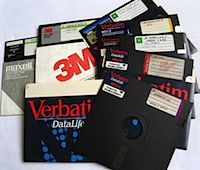The Observatory Report for Web 2.0 for Learning and Teaching in Higher Education, makes for interesting reading with regard to how particularly tertiary institutions are trying to handle the incorporation of Web 2.0 into their teaching & learning and many suggestions of how it could be used, and potential thorny issues in it's whole scale usage are summarised.
Firstly there is a startling statistic (maybe out of date) that the vast majority of users are not 'creators' of content in the Web 2.0 experience. The statistic for YouTube or Flickr content uploading for all the visits to the site was about than 0.2%. For Wikipedia the (surprisingly for me) is about 5% of the visits are to edit entries.
-
A widely quoted rule of thumb16 is that 1% of Web 2.0 users create content, 10% comment or in some way add to the content (e.g. adding a tag), and the remaining 89% consume content without adding to it (p. 6).
Which again seems counter intuitive to me. It does suggest that for the moment most people are still 'consuming' the information which the authors cite as being a Web 1.0 activity. Having said that I don't know why I'm surprised given that I've not really encountered this technology until this course and most people think that I'm technically savvy (ha!).
This report does suggest that at least a certain number of universities are trying to NOT incorporate Web 2.0 technologies as part of a formalised 'top-down' approach. Warwick, Leeds, Edinburgh, Brighton and Klagenfurt Universities appear to be adopting a complimentary approach to making Web 2.0 technologies avaiable but not necessarily a forced requirement to use. They've allowed the students to decide themselves if, when and how to use them.
The rest of the report is interesting because it highlighted concerns about the use of Web 2.0 technologies that I hadn't thought of before. Such as when and how, to lock down information in a way that is considered a part of the historical archiving of material. The whole purpose of a wiki is to be constantly evolvoing, but I do see the danger in never taking epistimological 'snapshots' - so when should the information be archived; what format should it take that is still accessible in the future.
References
Franklin, T. & van Harmelen, M. (2007) Web 2.0 for learning and teaching in higher education. Accessed on, 10th June, 2009, <http://www.obhe.ac.uk/documents/view_details?id=24>.
